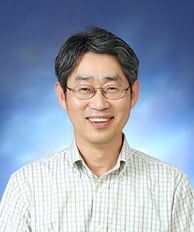[‘\n’, Contributions to the application of fMRI in humans and signal interpretation research
,
,

Kim Sung-ki, head of the Brain Science Imaging Research Division at the Institute for Basic Science (IBS), was selected as the Gold Medalist by the International Society for Magnetic Resonance in Medicine (ISMRM)./Institute for Basic Science,
,

,
, ‘Kim Seong-gi, the head of the Brain Science Imaging Research Division at the Institute for Basic Science (IBS) and a professor of biomedical engineering at Sungkyunkwan University, has won the Gold Medal from the International Society for Magnetic Resonance in Medicine (ISMRM), the top conference in the field of magnetic resonance imaging (MRI).’,
,
, ‘According to the IBS, Kim became the first Asian to be selected as a Gold Medalist in the field of magnetic resonance imaging (MRI) at the ‘ISMRM Annual Meeting’ held in Singapore on the 6th and it was announced on the 7th.’,
,
, ‘Kim graduated from Kyungpook National University with a degree in Applied Chemistry in 1980 and received his Ph.D. in Chemistry from the University of Washington in 1988. He has been working at Sungkyunkwan University and IBS since 2013, having worked at the University of Minnesota and the University of Pittsburgh.’,
,
, ‘He is known as an expert in the field of biological imaging and is one of the scientists who first applied functional magnetic resonance imaging (fMRI) to humans. fMRI is a tool used to study the function of body parts by utilizing changes in blood flow. It is considered essential for brain science research as an instrument that shows increased blood flow when brain cells are activated to supply oxygen. ‘,
,
, ‘Kim was recognized for his contributions to understanding the physiological signals revealed by fMRI signals in humans and animals. He was acclaimed for finding the correlation between phenomena in brain cells and fMRI signals, greatly increasing the utility of research. He also made remarkable achievements in developing a new MRI to measure brain blood flow and studying information processing between activated brain areas.’,
,
, ‘Kim stated, “It is even more honorable to reap the fruits of this basic research, rather than new image technology developments or clinical research in the MRI field.”‘,
,
, ‘\n’]

